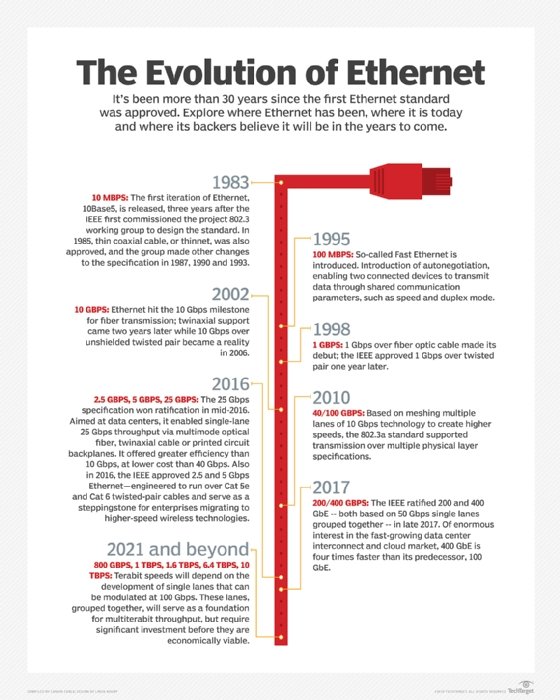
backgroundstore - Fotolia
What effect will 400 GbE have on enterprise networks?
400 Gigabit Ethernet is the next hurdle for Ethernet capabilities to surpass. But enterprises may not be prepared for this technology yet, due to its immaturity.
Network traffic across the internet, within data centers and in end-user networks has increased rapidly over time and shows no signs of stopping. While 100 gigabit Ethernet, or GbE, technology has only been available for a few years, a variety of applications already show a need for even higher data rates.
Industry experts expect large public cloud providers to be the initial adopters of 400 GbE switches. Yet, as links in cloud server racks upgrade to 50 or 100 Gb, IT teams must upgrade their network backbones to carry increasing amounts of traffic.
Large public cloud providers maintain geographically dispersed clouds to support worldwide enterprises and provide backup and failover. Traffic levels between clouds increase along with traffic levels within each cloud, so providers must also upgrade inter-cloud links.
Where will users see the effects of 400 GbE technology?
In addition to cloud environments, the internet also requires 400 GbE links. Traffic continues to grow rapidly due to multiple factors, including the following:
- Users stream popular TV networks, such as HBO and Netflix, over the internet.
- Viewers access a multitude of YouTube videos with individual end-user streams, which adds to internet traffic.
- Phone calls previously made over cell networks increasingly moved to the internet -- e.g., WhatsApp, Skype and Wi-Fi Calling on iPhones and Androids.
- 5G greatly increases cell network data rates, and much of this traffic will travel over the internet for some portion of its route.
- Online shopping continues to increase, with many vendors providing video to showcase products.

All of these applications contribute to the need for transport networks that carry internet traffic to move toward higher data rates. Transport providers anticipated this growth and began trials as soon as early 400 GbE equipment was available. Now that these trials are complete, experts anticipate providers will now upgrade wide area links, as well.
Additional applications that require higher bandwidth communication generally involve efficient moving and processing of large data amounts, such as files used in advanced data mining activities and AI, including machine learning.
IEEE developments with 400 GbE
It takes time to develop technology that supports higher throughputs. Work on the Institute of Electrical and Electronics Engineers (IEEE) 802.3bs standard for 400 GbE began in 2013, and the IEEE completed the work in late 2017. The IEEE devoted its time between the standard's release and product availability to interoperability testing, which ensures all components function and integrate as intended. With its work on 400 GbE complete, the IEEE began to develop the increased signaling rates needed to support even higher data rates.
400 GbE links are relatively new, and many prospective customers are still in the evaluation stage, but many networks will soon adopt 400 GbE to address support for increased traffic.






